Review: When You Should and Shouldn’t Use Huberd’s Shoe Grease
Huberd’s is a small American company based in Bennett, Colorado, and they’ve been in the shoe grease business since 1921. The company produces a variety of products like Shoe Oil, which is for more delicate leather, and Leather Dressing, which is for rugged leather items like saddles and harnesses.
Their flagship product is Huberd’s Shoe Grease — which is the name the company itself sometimes goes by — and it’s enormously popular, ranking as one of the top 5 selling conditioners on Amazon. The product claims to have,
“a unique effectiveness to renew leather and extend the comfort and life of boots”
In preparing this review, I used the product on two different boots: a pair of natural Chromexcel Captains from Thursday Boot Company, and my first pair of boots, the trusty Red Wing Moc Toes.
It worked great on one of them, not so great on the other. Here’s what happened.
[Get Huberd’s Shoe Grease for the lowest price on Amazon]
Huberd’s Shoe Grease Ingredients
- Beeswax and pine tar
- High melting point improves water resistance
- No animal fats
- No preservatives
Like practically every leather conditioner, the company isn’t very forthcoming with the ingredients. I even called and e-mailed them to find their MSDS, their safety data sheet, which is how I usually get a feel for a conditioner’s contents, but they ignored me.
I do know that the main ingredients are beeswax and pine tar, which help to waterproof the leather. The beeswax has a high melting point, so once you get the product soft and get it into the leather of the boots it then hardens, creating a barrier around the leather to provide water resistance.
Some worry that this can “suffocate” the leather, which is one reason you might not want this on nicer boots (there are more reasons below), but thick layers of beeswax and pine tar are nonetheless commonly sought after for outdoorsy boots.
I don’t know what the other ingredients are, but Huberd’s does specify there are no animal fats (like mink oil or tallow), no silicone, and no “preserver additives” either.
[Related: How to Waterproof Nice Boots]
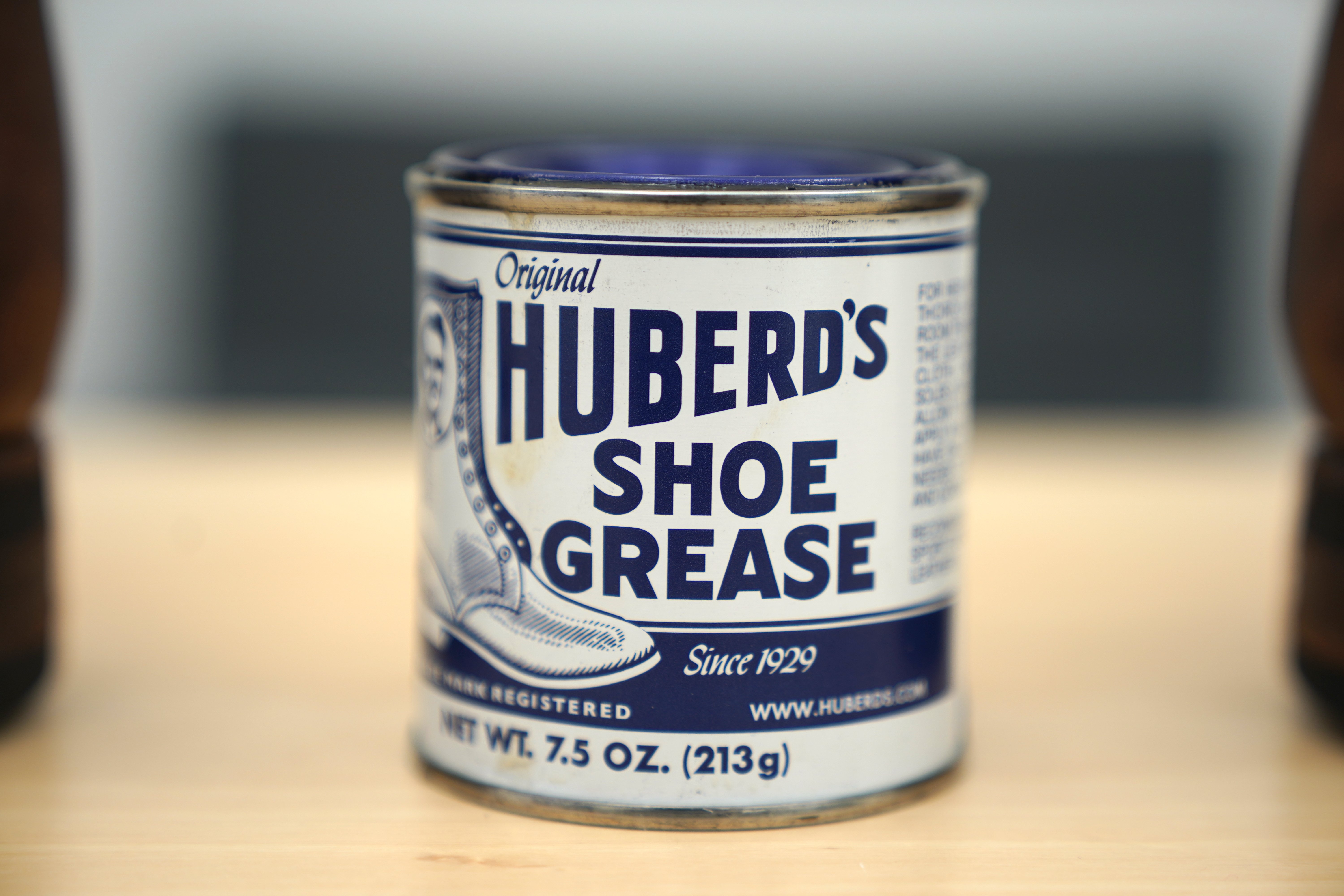
How to Use Huberd’s Shoe Grease
- Has the consistency of apple butter
- Sit the tin in hot water to soften
- Brush the shoes down with a horsehair brush
- Use multiple thin coats instead of one thick one
- Pay extra attention to spots where leather creases most
- Let boots sit for 24 hours
This stuff is very thick and sticky and has the consistency of apple butter. To soften it up, I sit the tin in a bowl of hot water for a few minutes before spooning it onto a lint-free cloth for application.
It’s worth noting that one of the biggest drawbacks of the product is the fact that because of the pine tar, it really smells like smokey bacon. That smell will dissipate over time, but the boots will probably always smell a bit like a campfire and if you apply it with your hands, you can enjoy smelling like pork rinds for a good day or two afterward.
Once it’s hot, the product goes on pretty quickly and easily. Use multiple thin layers instead of one thick one, then let them dry for a day or two.
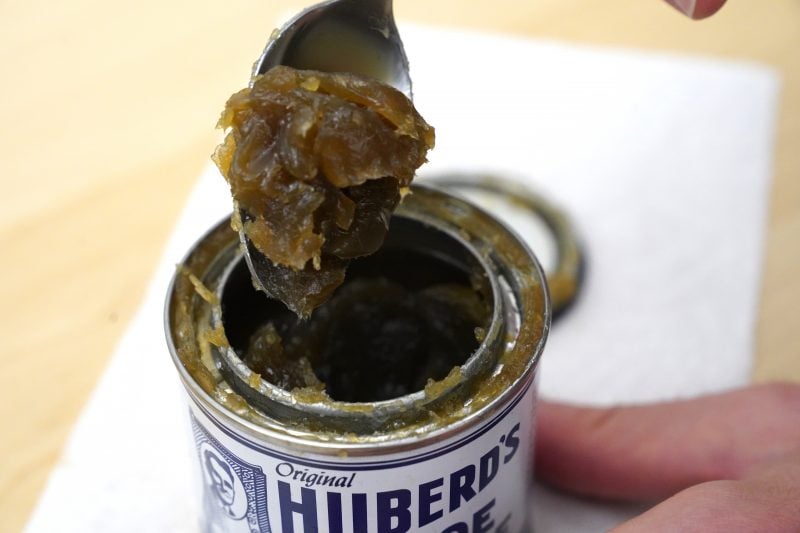
Huberd’s Shoe Grease Before and After
Again, I used this on two types of boots.
Oil Tanned Leather
My Red Wing Moc Toes (see my review or buy ’em if you like ’em) are made from Charcoal “Rough and Tough” leather. It’s oil tanned leather, which I think is underrated: it’s tough, doesn’t scratch easily, and requires little care. In short, it’s the ideal leather for rough and tumble boots.
Here’s what they looked like before (right) and after (left) treating them with Huberd’s Shoe Grease.
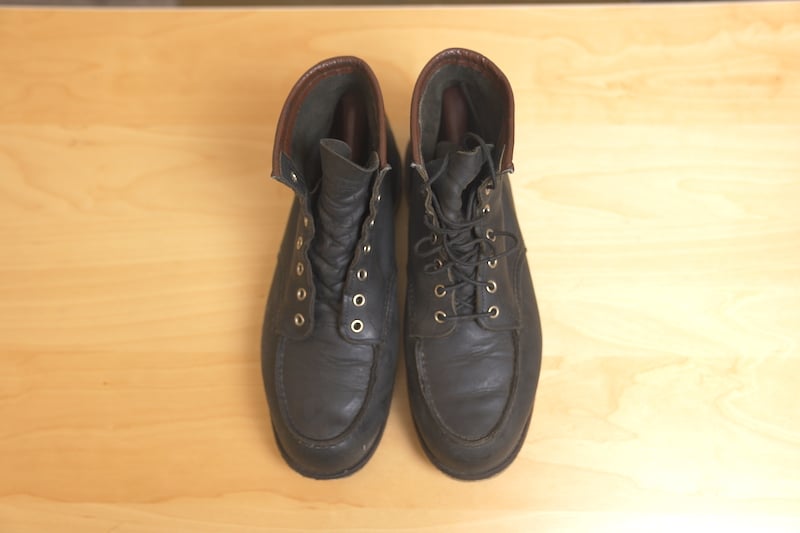
The boots are already dark, so there’s not much darkening. Instead, it produced boots that bead water away much more effectively, which should be the primary reason for purchasing Huberd’s.
It didn’t make the leather stiffer, but it also didn’t make it softer. It didn’t give it a lustrous shine, but that’s not what it’s for.
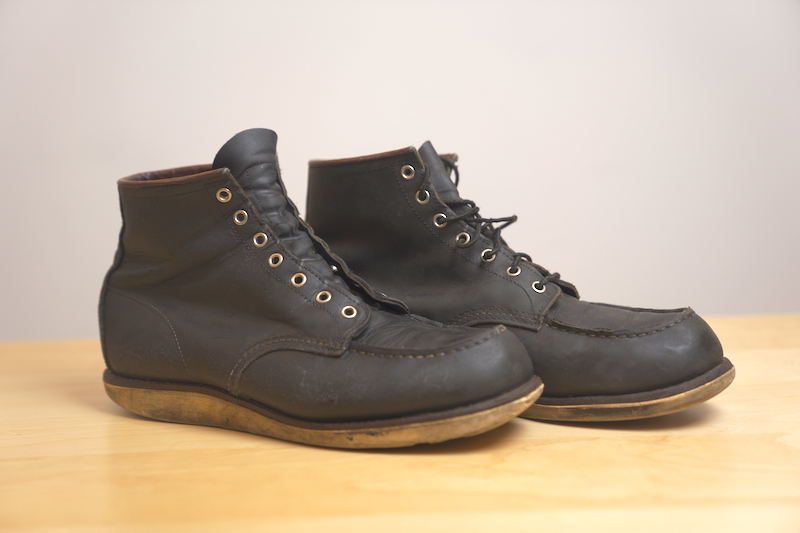
It gave the boots a layer of water resistant wax and tar that will help them to handle inclement weather, mud, and grime.
So that’s how it goes on outdoorsy boots. On dressier boots, it didn’t fare as well.
Chromexcel
For the uninitiated, Chromexcel is about the most popular leather for American boots. It’s a combination tanned leather from Chicago’s world famous Horween Leather Company. It’s developed with vegetable and chrome tannage, hot stuffed with various oils and waxes, and the finished product is a gorgeous leather with great depth of color. It scratches kind of easily, but it’s not hard to buff them out with a horsehair brush and a good conditioner.
That’s not Huberd’s Shoe Grease. Here’s what happened when the conditioner that did such a great job with my outdoorsy leather was applied to my nicer leather:
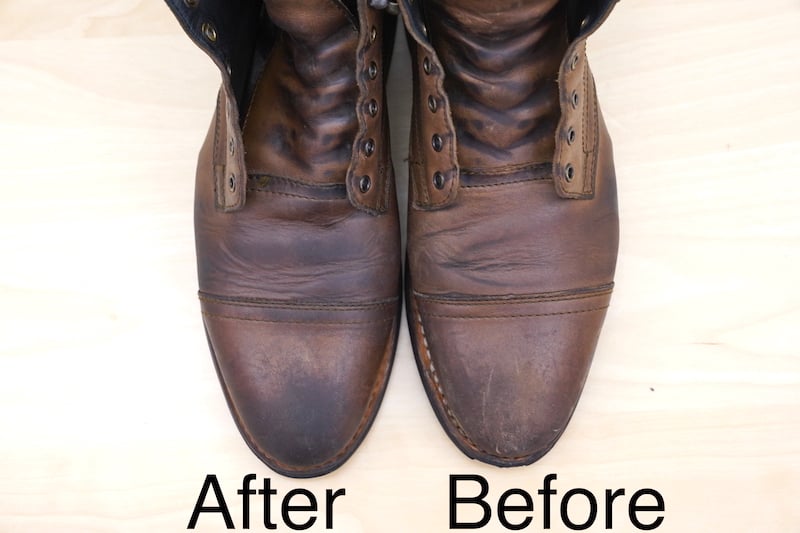
The boots were already in bad shape (as you can see on the right), but Huberd’s darkened the leather in a bad way. Most conditioners will darken boots to an extent, but on natural (that’s undyed) Chromexcel, it didn’t even darken them uniformly.
Even weeks later, the boots were still splotchy. I’ll be honest, I needed beat up boots to condition for this video so I borrowed these from a friend — and I had to buy him a new pair after making the mistake of putting Huberd’s on them.
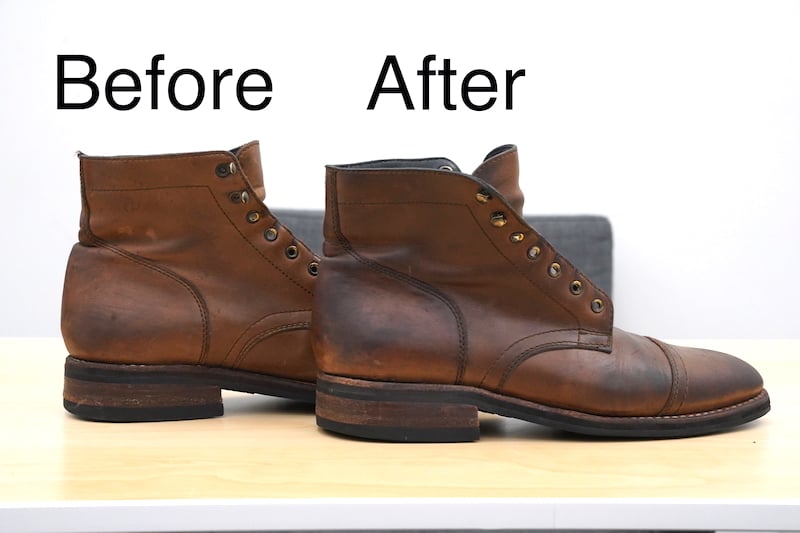
They became more water resistant, yes, but do not use it on your Chromexcel.
[Related: How to Care for Chromexcel Boots]
Huberd’s Shoe Grease Price
A tin costs about $12.50 for 7.5 ounces, so it’s about $1.60 per ounce. Buy some Huberd’s Shoe Grease here if you like it.
That’s pretty reasonably priced for a leather conditioner. It’s hard to compare these products because they all have different ingredients, but here are a few others that I’ve reviewed so you can get a feel for the value:
- Sof Sole Mink Oil: 85c/oz
- Bick 4: $1/oz
- Kiwi Conditioning Oil: $1.90/oz
- Cobbler’s Choice: $2.25/oz
- Leather Honey: $2.40/oz
- Venetian Shoe Cream: $3/oz
- Red Wing Mink Oil: $3.30/oz
- Saphir Renovateur: $9/oz
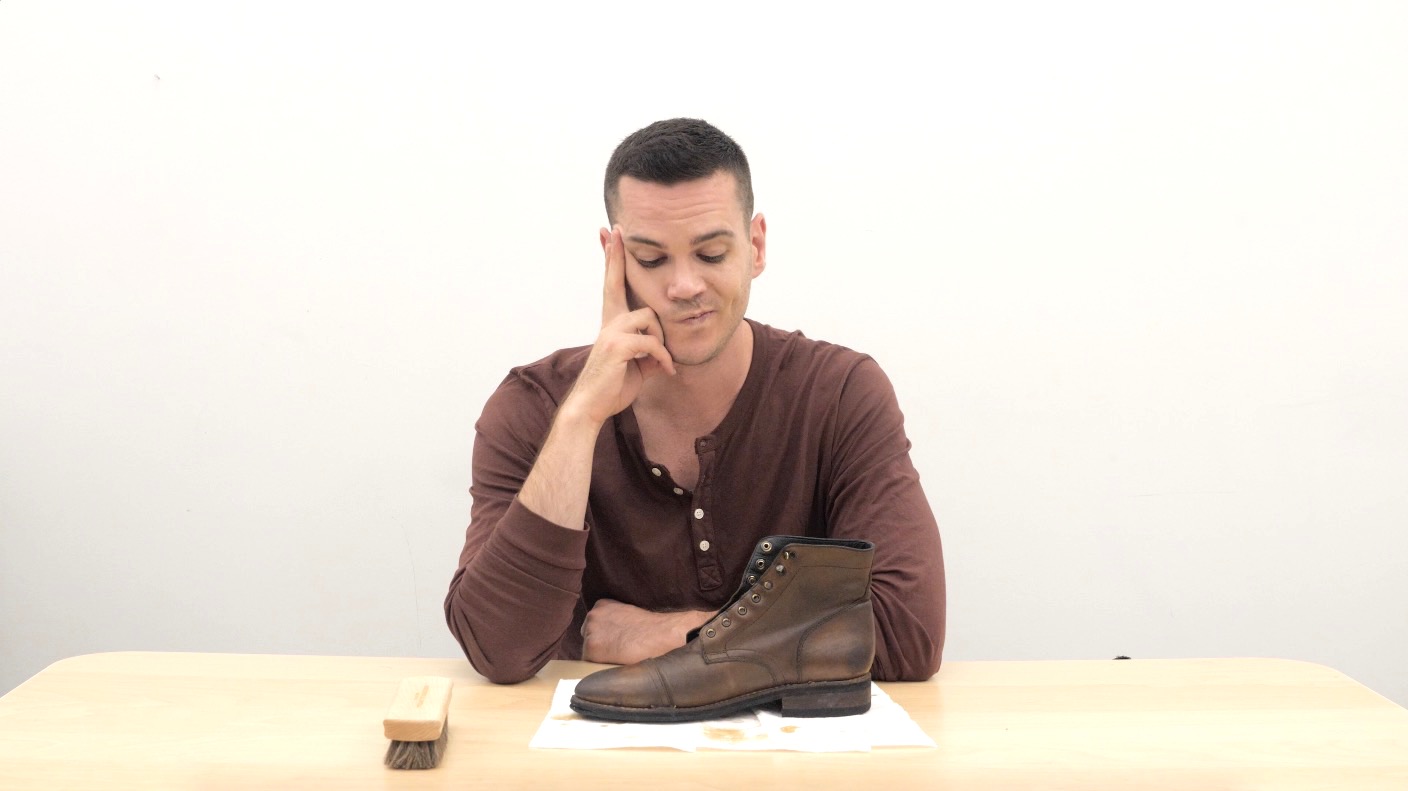
RELATED
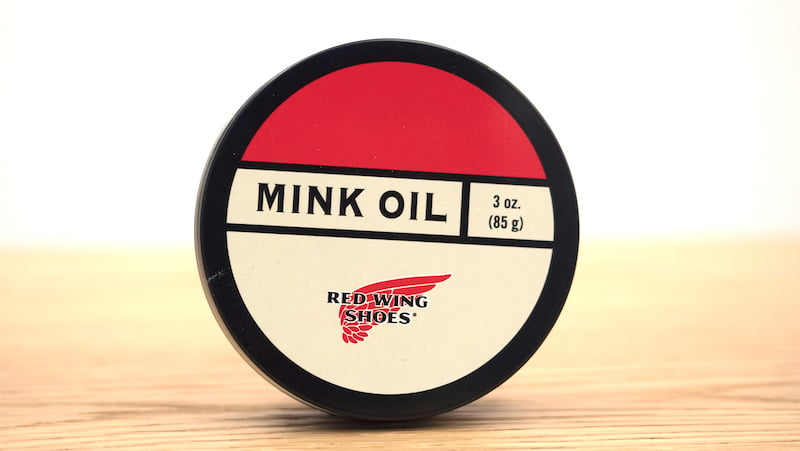
Mink Oil For Boots (Expert Guide) | Pros, Cons, & Alternatives
We reached out to three leading experts to get the best information about mink oil for boots. Learn more →
Huberd’s Shoe Grease Pros & Cons
Pros
- Money back guarantee
- Improves water resistance
- No silicone or preservatives
- No animal products
- Cheap
Cons
- Smells like bacon
- Hard to apply
- Darkens leather
- Not a great base for polish
- Bad on nicer leathers
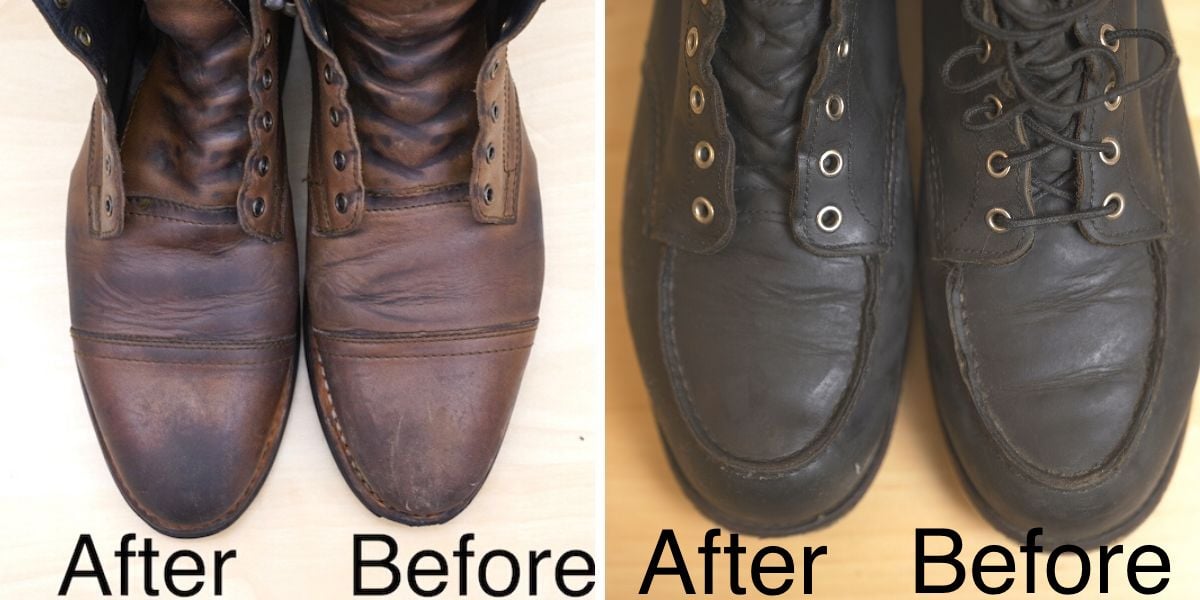
I think this is pretty clear. If you have dark boots that don’t need to be shiny, that you don’t want to polish, and you want to be more water resistant, then Huberd’s Shoe Grease will work fine.
If you have lighter boots that don’t need to be shiny or polished, that you want to be more water resistant, and you don’t mind them getting darker, then Huberd’s Shoe Grease is fine.
Honestly, it’s perfectly good at making boots tougher. But although a lot of people online have suggested that it can be used on Chromexcel (thanks guys), it can’t. If you want something to gently condition your leather, something you can polish over, or something to preserve the color of your boots, don’t use this product.
For outdoorsy boots you want to protect, it’s great.

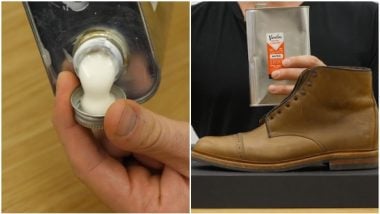
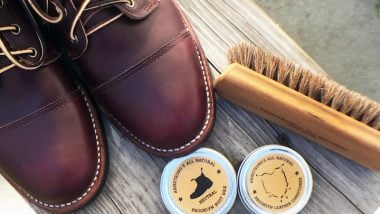
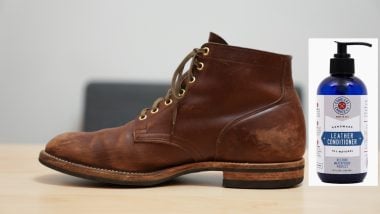


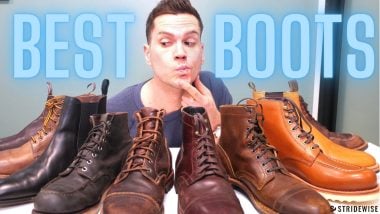
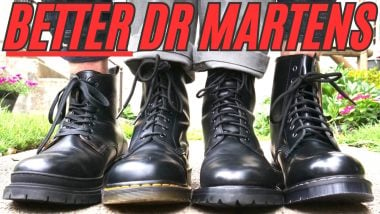
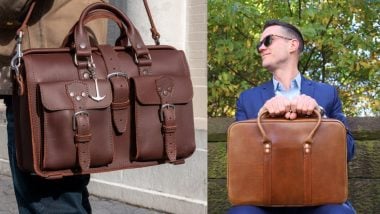

Might be a good time to strip and dye the Chromexcel boots.
Would you suggest saddle soap?
Smells like bacon is on the wrong section of your list. Please correct. Thanks…
Great review! I use it for my every day I’m-going-to-step-in-stuff-today boots and it works well. Your other reviews are top notch. Love the before and after pics.
Haha fair enough, some people love the bacon smell! Glad you found this review useful, the conditioner videos never get much love so your comment meant a lot to me, Val.
Huberd’s is a way of life, you can’t get permanent results from one application. It takes multiple times to fully soak into the leather and become waterproof. I have used it for over 35 years on custom built Wesco climbing boots that cost $450 + a pair and won’t use anything else. It is the best thing on the market to preserve your boots. You just have to use it every 3 months for good results.
I don’t disagree that it can give a lot of longevity to your boots when you’re using em in tough conditions!
Huberd’s Boot Grease is just that…Grease, not oil. No need to use hot water to melt it. Go ahead and stick your finger in the tin and pull out a glob! Rub between your hands that the warmth of your skin will soften it so that you can caress the Huberd’s into the leather. Using your hands and fingers allows you to get into tight spots, under flaps, and around the edges better that using a cloth.
Also: SDSs (Safety Data Sheets…and used to be called MSDS) are only required for materials that meet OSHA’s definition of hazardous and are ‘known to be present in the workplace in such a manner that employees may be exposed under normal conditions of use or in a foreseeable emergency.’ SDSs only have to list hazardous materials/ingredients of above a certain percent of composition.
An SDS does not necessarily list all materials/ingredients in a product. REPEAT: An SDS does not necessarily list all materials/ingredients in a product.
In addition, manufacturers do not legally have to provide SDS’s to general public consumers.
Yeah I’ve actually seen the MSDS and it doesn’t tell you anything.
Following up on your question above–if you’re going to strip and dye them, I’d use something like Saphir Reno’Mat rather than just saddle soap. It does an amazing job of removing everything–your boots will take up the dye much more consistently than if you just clean the leather with soap. My two cents.
I like that idea Kuri! I would quite like to strip my too-dark Iron Rangers.
Any idea how to prevent a crease on a new leather boot from digging into my foot while walking? I’m asking about a new pair of Palladium Boots (PAMPA CUFF WP LUX MAJOR BROWN) which are made with Waterproof oiled nubuck leather.
This new article might help, Ash! https://stridewise.com/how-to-stop-prevent-blisters-on-heels/
Brother, I actually like the the look of the chromexcel leather boots after you used the Hubbard’s on them. They took on a burnished patina. I have a pair of wolverine blvd dress boots that I absolutely love that came like that new. It all depends on the look you are going for. I’ve used Hubbard’s on the same kind of natural fine leather boots and they didn’t discolor nonuniformly bc they were newer. The areas of discoloration look like where the leather was worn away. Again, I like the look. I get more compliments on my burnished boots than any other boot I own.
Yeah it’s funny, a lot of people like my Iron Rangers that I darkened with too much Obenauf’s. I think you just have to be clear on how dramatically the appearance will change!
Wait!!!
Smelling like smoked bacon and campfires is a drawback? I love the smell of this stuff. I used to work for a cordwainer and I applied Huberds to just about every boot and shoe that went out.
You’re right, that’s not much of a con is it